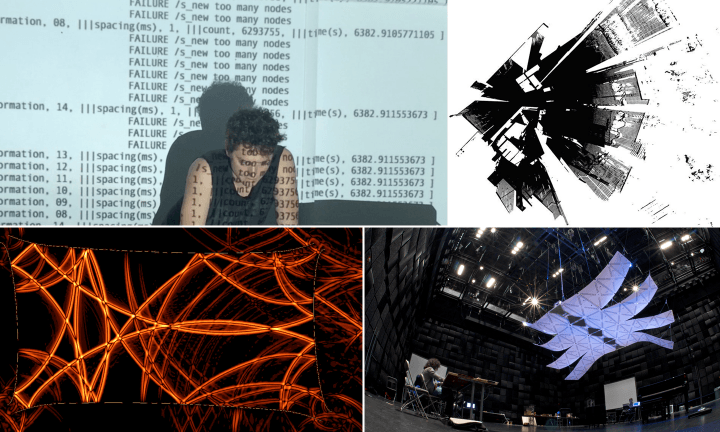Zackery Belanger is a designer, consultant, and researcher whose work is centered on the integration of acoustics into architectural design. He holds a B.S. degree in Physics, and M.S. degrees in Physics and Architectural Sciences. From 2002 – 2010 he worked for Chicago-based acousticians Kirkegaard Associates, consulting and developing acoustic materials and geometries for projects large and small. In 2013 he was the inaugural Researcher-in-Residence at Rensselaer Polytechnic Institute’s Experimental Media and Performing Arts Center [EMPAC] in Troy, NY, where he began development of a new framework for the design and assessment of acoustic architecture. He then founded the Detroit-based studio Arcgeometer. He has received grants from the Graham Foundation for Advanced Studies in the Fine Arts, the Foundation for Contemporary Arts and, most recently, from Guardian Glass for research into fabrication and assessment of curved glass in acoustics and lighting (with Catie Newell and Wes McGee of the University of Michigan School of Architecture). He lectures frequently on basic acoustics and the future of the field.
Q: Design Change is…
A: Design Change is finding solutions to worthy problems even if they require people, methods, and a pace that are out of sync with the dominant structures of our culture and time. I think that’s a good lens for many fields. In acoustics the disconnect between architectural design and acoustic knowledge is vast, and the methods of acoustics are overly complicated. I think those are indicators that we’re missing something important.
Q: What’s the big opportunity for design in Seattle?
A: I’m sure it isn’t centered on acoustics. The influx of money into Seattle is probably the biggest opportunity. How can new wealth respect the people and history of Seattle, and make it a better place to live – especially for those who made it the place it is? I think this question should be posed to community leaders and more specific design opportunities would emerge.
Q: If you could change one thing about your design profession, what would it be?
A: To integrate acoustic performance into architectural design to such a degree that acousticians who design well and architects who understand sound would communicate effortlessly.
Q: What perspective change does your design profession need?
A: We need to shift some of our energy from materials to shape. Melamine sheets and melamine foam are both the same material, but shape makes one reflect and one absorb. Absorbers, diffusers, reflectors, and transmitters are not a palette of treatment options – they are part of a spectrum of shape. When you “treat” a room acoustically you’re changing its shape, and if you get the shape right to begin with then it won’t need treatment at all. If tools are developed that connect acoustics with shape then room designs can be generated, not iterated to hit obscure acoustics parameters.
Q: Is there anything specific to your design field that positions you to take a role in creating change?
A: Yes. The way we currently do things and the way we will soon do them need to live alongside one another in order to vet the new. I cut my teeth with the old and I see clearly the direction that will lead to the new.
Q: There’s an Italo Calvino quote, “A world without forgetting is hell.” How do you balance an understanding of tradition, institutional memory, or wisdom, with the necessity of forgetting things and moving on in order to achieve progress? Is there anything new left to do?
A: Anyone who thinks there is nothing new left to do is ignoring history to a dangerous degree. We always reach these points where we think we have it figured out, but we never do. We can’t know the scale of what we don’t yet know. It’s always a terrifying scale. It was a surprise when the heliocentric model was proposed. It was a surprise when electricity and magnetism were combined. It was a surprise when the taxi industry was decimated. There’s no difference except the pace at which these shifts are coming, and there’s no evidence they will stop coming. Figuring out what to draw from and what to leave behind takes constant reevaluation and a total submission to process.
Q: What is the most risky or controversial thing you have designed?
A: I have a concept design for a concert hall that has no acoustic absorption or diffusion – no acoustic “treatment” at all. I think it could be the future and if it’s not, I think it forces us to ask the right questions.
Q: What influences you outside of design?
A: Human relationships, literature, physics, and basketball.
Q: What advice would you give designers new to the profession?
A: Things are about to get intense. A large portion of acoustic design will be absorbed into architecture. Get in there and be open to it.
Learn more about Zackery’s work:
Arcgeometer
Twitter – @zbelanger
Instagram – @arcgeometer
Email – zb@arcgeometer.com





